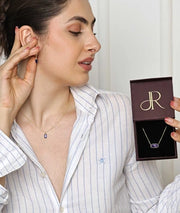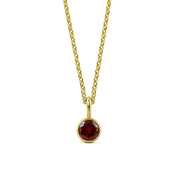Earring gauges refer to the thickness of the part of the earring that passes through your ear piercing. Unlike standard earrings, gauges are designed to gradually stretch your piercing to a larger size. The term "gauge" comes from the American Wire Gauge (AWG) system, which is used to measure the thickness of wire, and in this case, it is applied to jewelry as well.
If you are interested in body modification, alternative fashion, or simply enjoy bold accessories, it is important to understand earring gauges before you begin stretching your ears. Proper knowledge ensures a safe and stylish experience while wearing gauge earrings.
Why Do People Wear Gauged Earrings?
Gauged earrings are a distinctive form of self-expression. People wear them for a variety of reasons, including aesthetic, cultural, or spiritual purposes. In several cultures, such as those in Africa and South America, stretched ears are considered a traditional standard of beauty. Today, many choose gauged earrings to make a fashion statement, showcase individuality, or explore the art of body modification.
How Gauge Sizes Work
In the gauge system, the lower the number, the larger the jewelry. For example, 18G (gauge) is thinner than 2G. Once you go past 0G, sizes are measured in millimeters or inches, like 1/2", 5/8", and beyond.
Ear Gauges Size Chart
Here’s a handy chart to help you understand the progression:
|
Gauge (G) |
Millimeters (mm) |
Inches (approx.) |
|
20G |
0.8 mm |
0.03" |
|
18G |
1.0 mm |
0.04" |
|
16G |
1.2 mm |
0.05" |
|
14G |
1.6 mm |
0.06" |
|
12G |
2.0 mm |
0.08" |
|
10G |
2.4 mm |
0.10" |
|
8G |
3.2 mm |
0.13" |
|
6G |
4.0 mm |
0.16" |
|
4G |
5.0 mm |
0.20" |
|
2G |
6.0 mm |
0.24" |
|
0G |
8.0 mm |
0.31" |
|
00G |
10.0 mm |
0.39" |
|
7/16" |
11 mm |
0.43" |
|
1/2" |
12 mm |
0.47" |
|
9/16" |
14 mm |
0.55" |
|
5/8" |
16 mm |
0.62" |
Learn More: How to Take Off Earrings of Any Type Easily?
How to Start Stretching Your Ears
Stretching your ears is a gradual process that requires patience, proper tools, and careful care. Moving too quickly can cause injury or infection, so it is important to follow each step carefully to ensure safe and healthy results. Here is a guide to help you get started
Start with a Healed Piercing
Never stretch a fresh piercing. Make sure your ears are fully healed, typically after 6–8 weeks for standard lobe piercings.
Go Slow and Steady
The safest way to stretch your ears is by going one size up every 4–6 weeks. Rushing can cause tears, scarring, or even permanent damage.
Use Lubricant and Tapers
Use a high-quality oil (like jojoba or vitamin E) and a taper tool to gently slide in the new gauge. Don’t force it if it hurts, wait longer.
Keep It Clean
Wash your lobes with a mild, unscented soap and rinse daily. Infection is the last thing you want during the stretching process.
What to Know Before Choosing Gauged Earrings
Before you pick your first set of gauged earrings, it’s important to understand the materials, risks, and long-term effects. Making informed choices early on can save you from discomfort or permanent damage later.
Material Matters
Go for surgical steel, titanium, or glass for initial stretches to avoid allergic reactions. Avoid acrylic and silicone for fresh stretches.
Avoid Blowouts
A blowout is when the inside of your piercing is pushed out the back due to stretching too fast. It's painful and hard to fix.
Downsizing Is Possible
You can go back to a smaller size if the stretch isn’t too big (typically under 2G). However, anything larger than that may not shrink back completely.
Styling Gauged Ears
Looking for stylish, high-quality earrings? Rarete Jewelry offers a stunning range of different gauge sizes to match your style. Explore the collection today!
Explore More: How Long Does It Take for Earring Holes to Close?
Final Thoughts
Earring gauges are more than a fashion statement—they represent a commitment. If you plan to stretch your ears, it is important to take your time, select high-quality jewelry, and follow proper care routines. Whether you aim for a subtle stretch or a bold, eye-catching look, understanding gauge sizes and the stretching process will help you achieve it safely and stylishly.
For those exploring daring new styles, you can complement your stretch journey with other statement jewelry pieces. If you are not ready to commit to stretching, faux gauge earrings offer the same edgy look without the long-term commitment.






